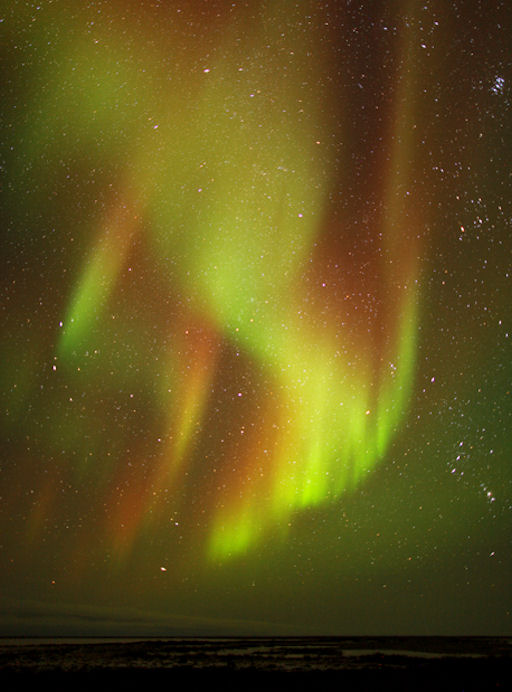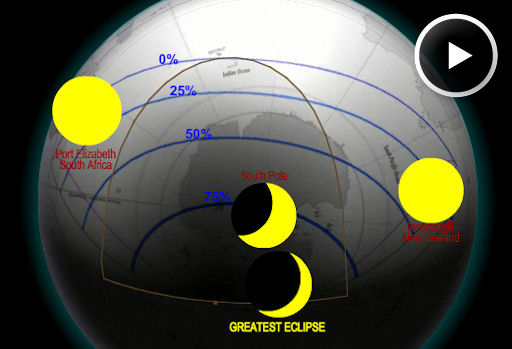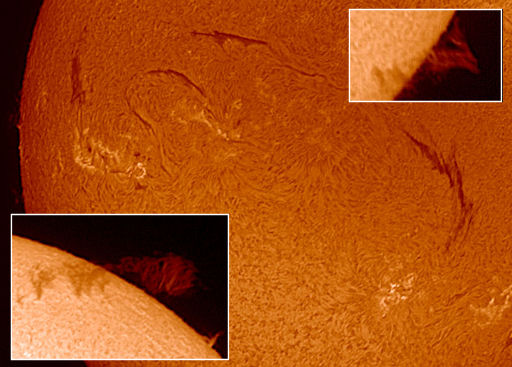~11~23~11~ SPACE WEATHER UPDATE CHANCE OF STRONG FLARES~

CHANCE OF FLARES: Earth-facing sunspot 1356 has developed a "beta-gamma" magnetic field that harbors energy for M-class solar flares. NOAA forecasters estimate a 30% chance of such an eruption during the next 24 hours.
NORTHERN LIGHTS: After a stunning October, the Northern Lights of November 2011 have been mostly subdued. Earth hasn't been hit hard by any CMEs this month. Nevertheless, some auroras have been sighted dancing around the Arctic Circle. Eric Rock was on a wildlife photography expedition on Nov. 21st when this curtain appeared over Churchill, Manitoba:
"We end-of-the-season polar bear watchers were rewarded with a spectacular display," says Rock.
There was a similar apparition last night over Russia: image.
These displays are not caused by major solar activity; indeed, the sun has been mostly quiet for weeks. Instead, they are prompted by small magnetic fluctuations in the solar wind. The interplanetary magnetic field (IMF) near Earth tips south, partially cancelling Earth's north-pointting magnetic field. Solar wind pours in, oh so briefly, to excite the Northern Lights.
ANTARCTIC SOLAR ECLIPSE: On Nov. 25th the Moon will pass in front of the sun, slightly off-center, producing a partial solar eclipse visible from Antarctica, Tasmania, and parts of South Africa and New Zealand. An animated map created by graphic artist Larry Koehn shows the eclipse unfolding across the southern end of our planet:
Maximum coverage occurs about 100 miles off the coast of Antarctica where the sun will appear to be a slender 9% crescent. Observers in the eclipse zone should be alert for crescent-shaped shadows and sunbeams. The sun-dappled ground beneath leafy trees is a good place to look. Of course that won't work in Antarctica where trees are scarce. Observers there should use safe solar filters to witness the crescent sun itself.
QUIET BEAUTY: With more than half a dozen spots scattered across the face of the sun, the sunspot number is high. Nevertheless, solar activity remains low. None of the sun's so-called "active regions" are actually producing flares. The starscape, meanwhile, is as beautiful as ever. On Nov. 22nd, Robert Arnold took these pictures from his private observatory on the Isle of Skye, Scotland:
"The sun is criss-crossed with magnetic filaments and plasma clouds," says Arnold. "It's a beautiful view."
Readers with solar telescopes, don't let the quiet fool you. Today is a good day for sun-stronomy.
more images: from John Minnerath of Crowheart Wyoming; from Efrain Morales Rivera of Aguadilla, Puerto Rico

Solar wind
speed: 406.9 km/sec
density: 3.4 protons/cm3
explanation | more data
Updated: Today at 1516 UT
X-ray Solar Flares
6-hr max: C2 1328 UT Nov23
24-hr: C2 1328 UT Nov23
explanation | more data
Updated: Today at: 1500 UT
![]()
Daily Sun: 23 Nov 11
Sunspot 1356 has a "beta-gamma" magnetic field that harbors energy for M-class solar flares. Credit: SDO/HMI





